For us, travel and history go hand in hand. It’s not just about escaping the "real world”…it’s about discovering the stories, culture, and people that shaped the places we visit.
That’s why, during our short stay in Athens, we made the most of every hour. We dropped our bags at the hotel and hit the streets to start exploring immediately. One day was set aside for a bus tour to Delphi to see the ancient ruins of the Temple of Apollo.
This is one of the most popular day trips from Athens, so your experience will vary depending on the season. For us, it was April, just before the peak tourist rush. There were still plenty of people, but the crowds were manageable, the weather was pleasant, and we had lots of great photo opportunities without feeling overwhelmed.
Delphi: A Sacred Center of the Ancient World
Back in the 7th century BCE, Delphi was one of the most important religious and cultural centers in the ancient Greek world.
Pilgrims came from across Greece to consult the oracle, a priestess known as the Pythia, who delivered Apollo’s prophecies in riddle-like messages. These cryptic responses shaped decisions about war, politics, and personal fate. The oracle's power was so great that entire city-states competed to honor Apollo with treasuries and monuments along the Sacred Way.
Even after the Romans took over in the 2nd century BCE, Delphi retained its spiritual significance. Roman emperors respected the sanctuary, but over time, as Christianity rose, the oracle’s influence faded. The last recorded prophecy dates to the 4th century CE, when pagan temples were officially closed.
The Sacred Way
The Sacred Way was the heart of the ancient pilgrimage experience at Delphi. Stretching from the sanctuary’s main entrance up to the Temple of Apollo, this winding, stone-paved road was a ceremonial journey.
Pilgrims from across the Greek world traveled here, often arriving at the port of Kirra, then making their way inland.
Along the Sacred Way, city-states and wealthy individuals built treasuries, monuments, and statues to honor Apollo and showcase their devotion and power. These offerings turned the path into a dazzling outdoor gallery, filled with bronze statues, marble sculptures, and lavish buildings.
Roman Market
Near the entrance to the Sanctuary of Apollo, you’ll find the ruins of a small Roman market, or Roman Agora.
Built around the 1st century BCE, it reflects how Delphi evolved.
When Rome took an interest in Delphi, the sanctuary remained important, but practical needs changed. The Roman Agora was added to support the bustling flow of pilgrims and merchants.
Here, travelers could buy offerings, supplies for rituals, and souvenirs. It helped support both the religious and economic life of Delphi during Roman times.
The Agora’s remains include:
Rows of shops that once sold goods
Stone-paved courtyards where merchants and worshipers mingled
Architectural details showing a blend of Greek and Roman styles
Athenian Treasury
As you walk up the Sacred Way toward the Temple of Apollo, you pass the remains of several treasuries. These weren’t banks, but monumental storehouses for precious offerings: gold, silver, statues, weapons, and fine artworks given to Apollo as gifts of gratitude or to show off civic pride.
The most famous is the Athenian Treasury. It’s beautifully reconstructed today, giving visitors a powerful sense of how rich and ornate these structures once were. Its gleaming marble walls were once covered with carvings of heroic myths.
Each treasury served two purposes:
Religious: honoring Apollo with lavish tributes
Political: reminding every visitor who passed by of the wealth, power, and piety of the city that built it
In the height of Delphi’s glory, the treasuries turned the Sacred Way into a competition of prestige, as states tried to outshine each other with grander and grander monuments.
Temple of Apollo
At the heart of Delphi stands the Temple of Apollo, the sacred centerpiece of the entire sanctuary. Built and rebuilt multiple times, this was where Apollo was believed to speak through his oracle, the Pythia.
The temple itself was a majestic structure, once surrounded by 6 columns on the front and 15 along the sides. Inside, past the grand columns and the inner courtyard, lay the adyton — a mysterious underground chamber where the priestess would sit and deliver Apollo’s prophecies, often in a trance-like state.



Key facts about the Temple:
First built: around the 7th century BCE (earlier versions were destroyed by fire and earthquakes)
Current ruins: mostly from the 4th-century rebuilding
Architecture: Doric style
Famous inscription: "Know Thyself" was said to have been carved at the temple entrance
More than just a religious site, the Temple of Apollo was a spiritual crossroads — kings, generals, and common people all came here to seek guidance before wars, journeys, or major decisions.
Theatre of Delphi
Tucked above the Temple of Apollo, carved into the natural slope of Mount Parnassus, is the ancient Theatre of Delphi. It’s one of the best-preserved theaters in Greece. Built in the 4th century BCE (and later modified by the Romans), it was the cultural heart of the sanctuary, where music, poetry, and drama flourished alongside religion.
The Theatre offered:
Seating for about 5,000 people, arranged in stone tiers (cavea)
A sweeping view not just of the stage but of the Temple of Apollo and the valley far below
A stone orchestra (the circular area) where performances took place
It wasn’t just for entertainment. The Theatre hosted performances during the Pythian Games, a festival held every four years in Apollo’s honor. These games celebrated art and intellect alongside athletic competition — a true reflection of Apollo as a god of music, prophecy, and harmony.
Performances included:
Hymns and songs dedicated to Apollo
Tragic and comedic plays
Recitations of poetry


Museum
No visit to Delphi is complete without stepping into the Delphi Archaeological Museum. Located just below the main archaeological site, the museum holds many of the most important finds uncovered during excavations.
It’s here that we experienced the longest lines. The rooms inside of the museum aren’t very big. We stood inline to get inside and, once inside, we waited a few more times for some of the rooms to clear before more people were allowed to enter.
Key highlights include:
The Charioteer of Delphi: one of the finest surviving bronze sculptures from ancient Greece, famous for its incredible detail and lifelike stillness
The Sphinx of Naxos: a towering, winged statue that once stood atop a tall column along the Sacred Way
Treasury offerings: statues, jewelry, gold and silver votives, and ceremonial objects left by pilgrims and city-states
Returning to Athens
On the way back our tour bus stopped in Arachova so we could visit one of the shops in town. This was played off as a unique opportunity that doesn’t happen often. Once we stopped, it was obvious that this was common and that there’s a prearranged agreement with the tour company and the shop owner.
I would have preferred to have stopped in town for 30 to 40 minutes to explore the shops of our choosing instead of being sold this fake story.
There was one other stop on our way back to take in a scenic view of…
After this way made our long way back to Athens. Traffic had built up and we had to seek an alternate route back. The tour makes for a long day but the sites and history in Delphi did not disappoint.
This trip to Delphi reminded me how powerful it is to connect with the past while traveling. If you’re looking for a simple way to remember the places you’ve been and what made them special, check out DuckAbroad — our travel journal app for curious families and everyday adventurers. Also, now available in Apple App Store.


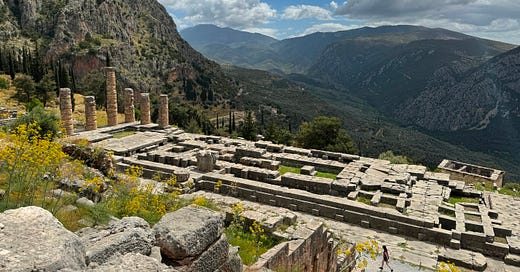



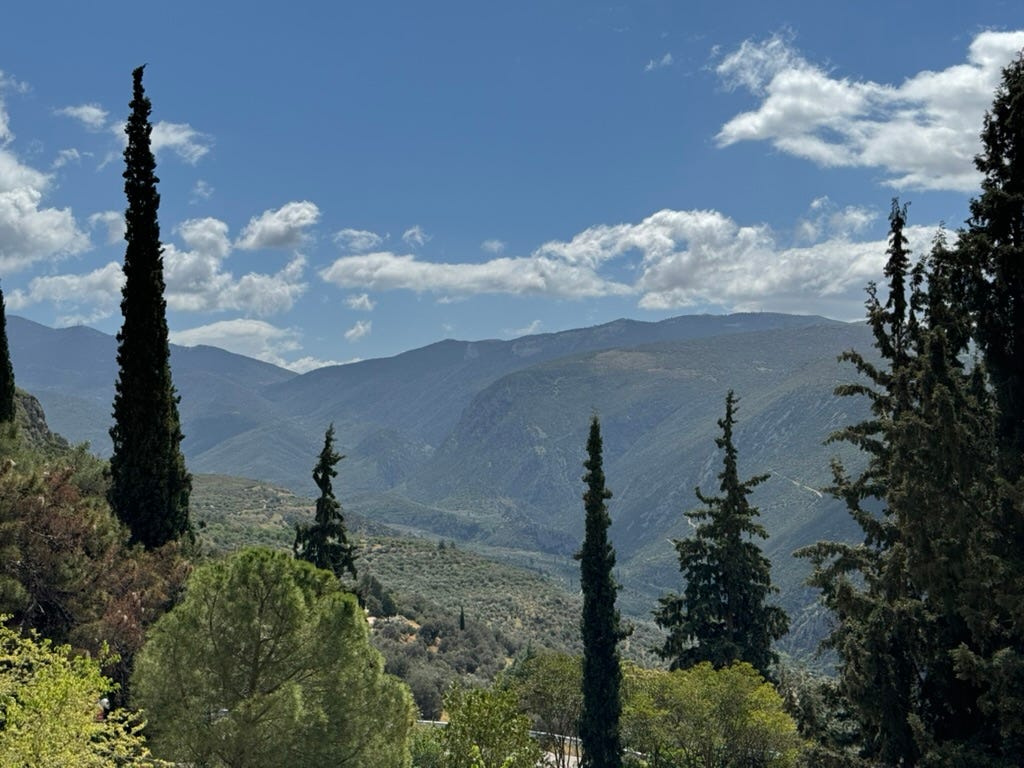
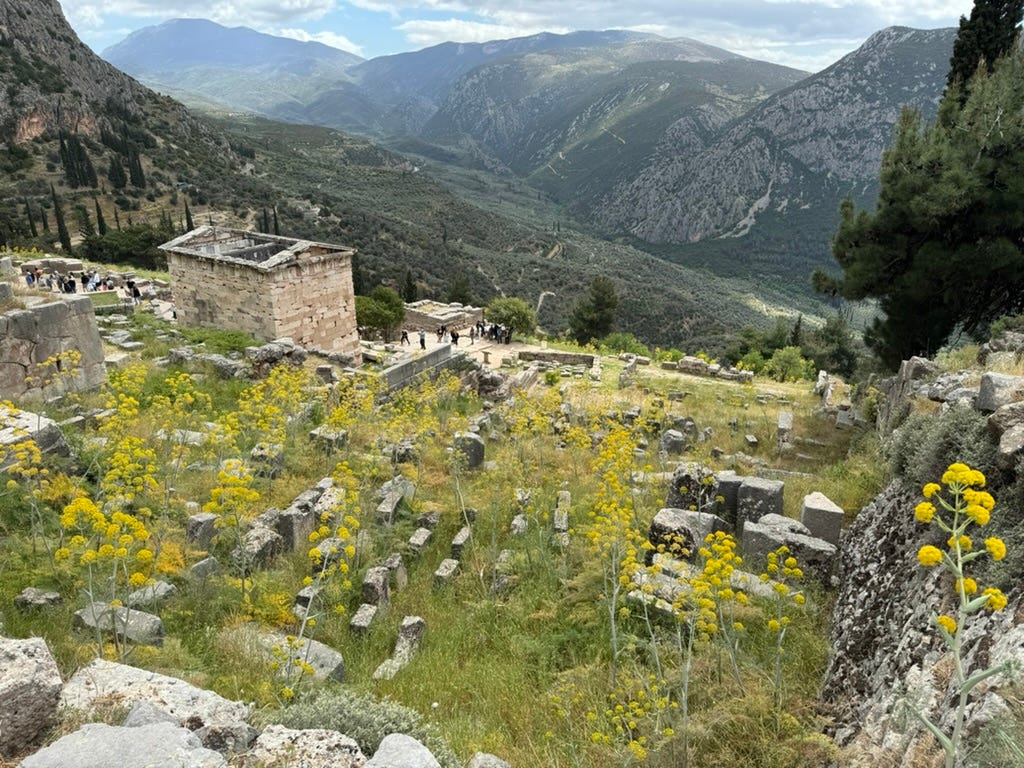
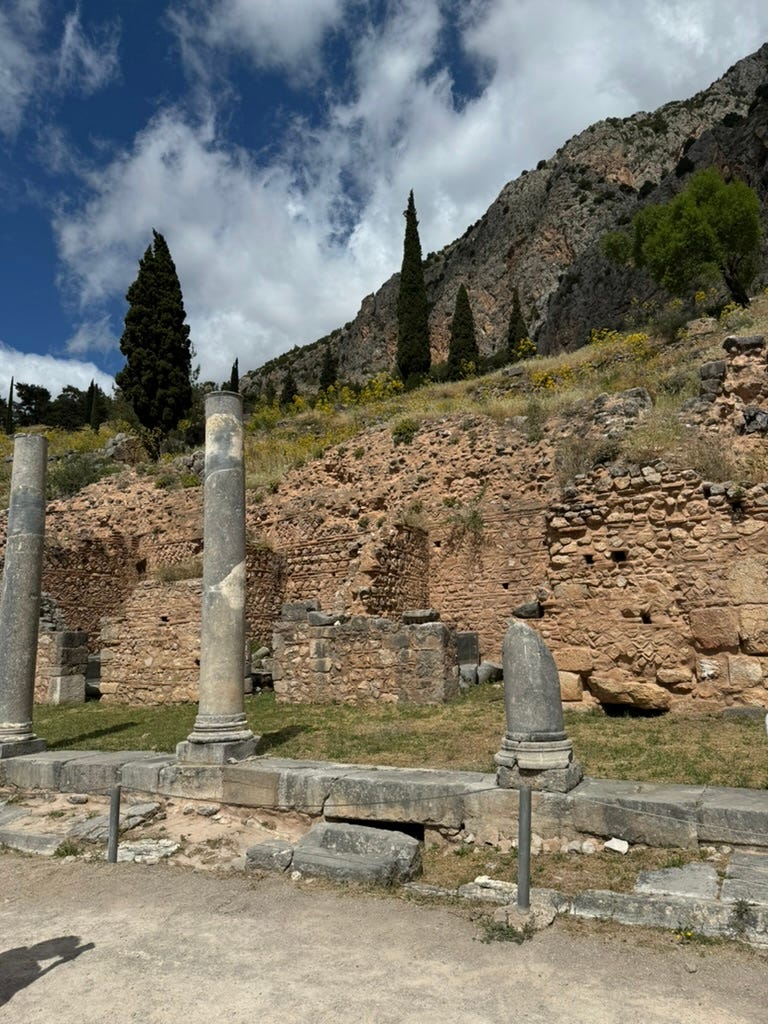
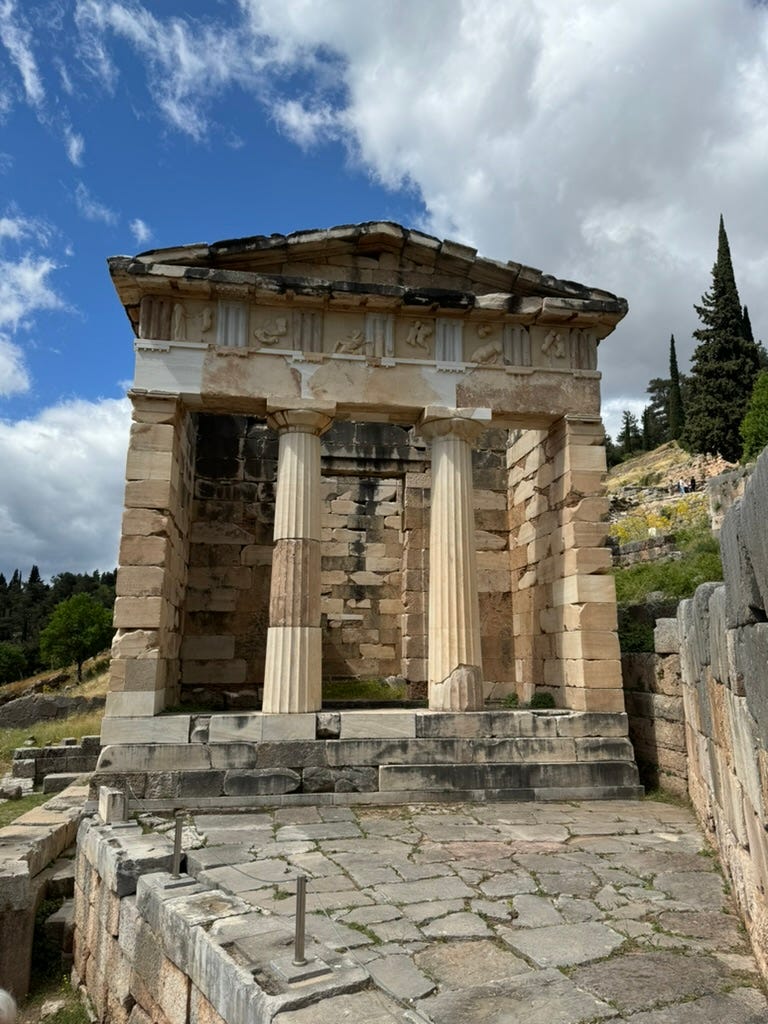
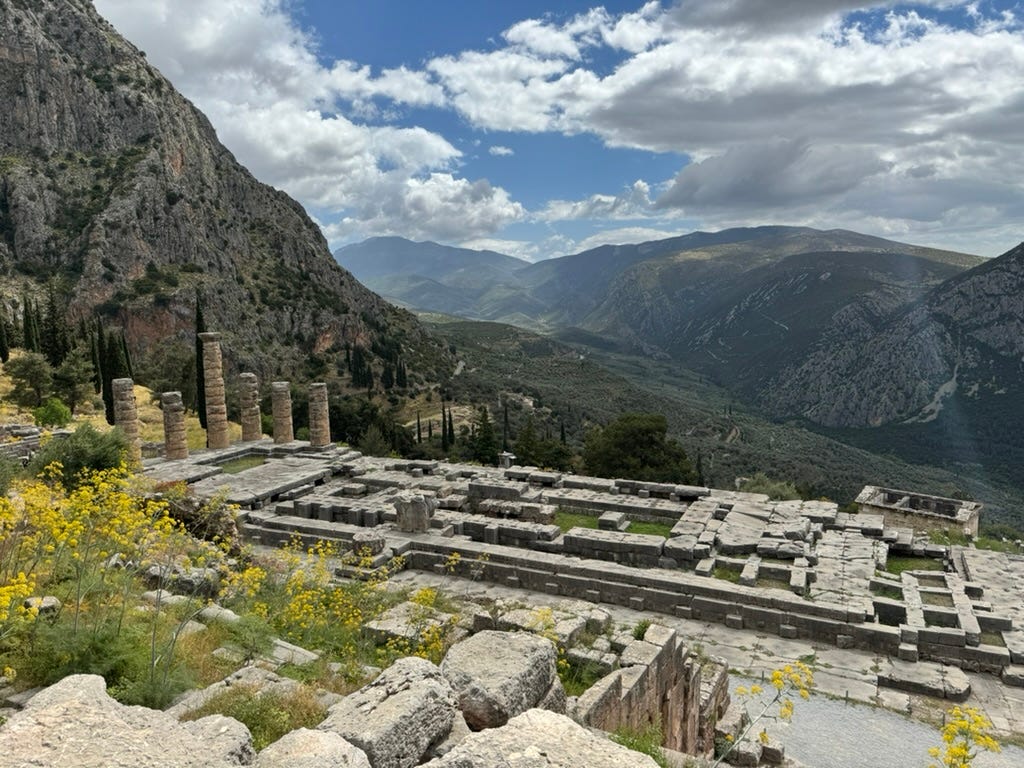
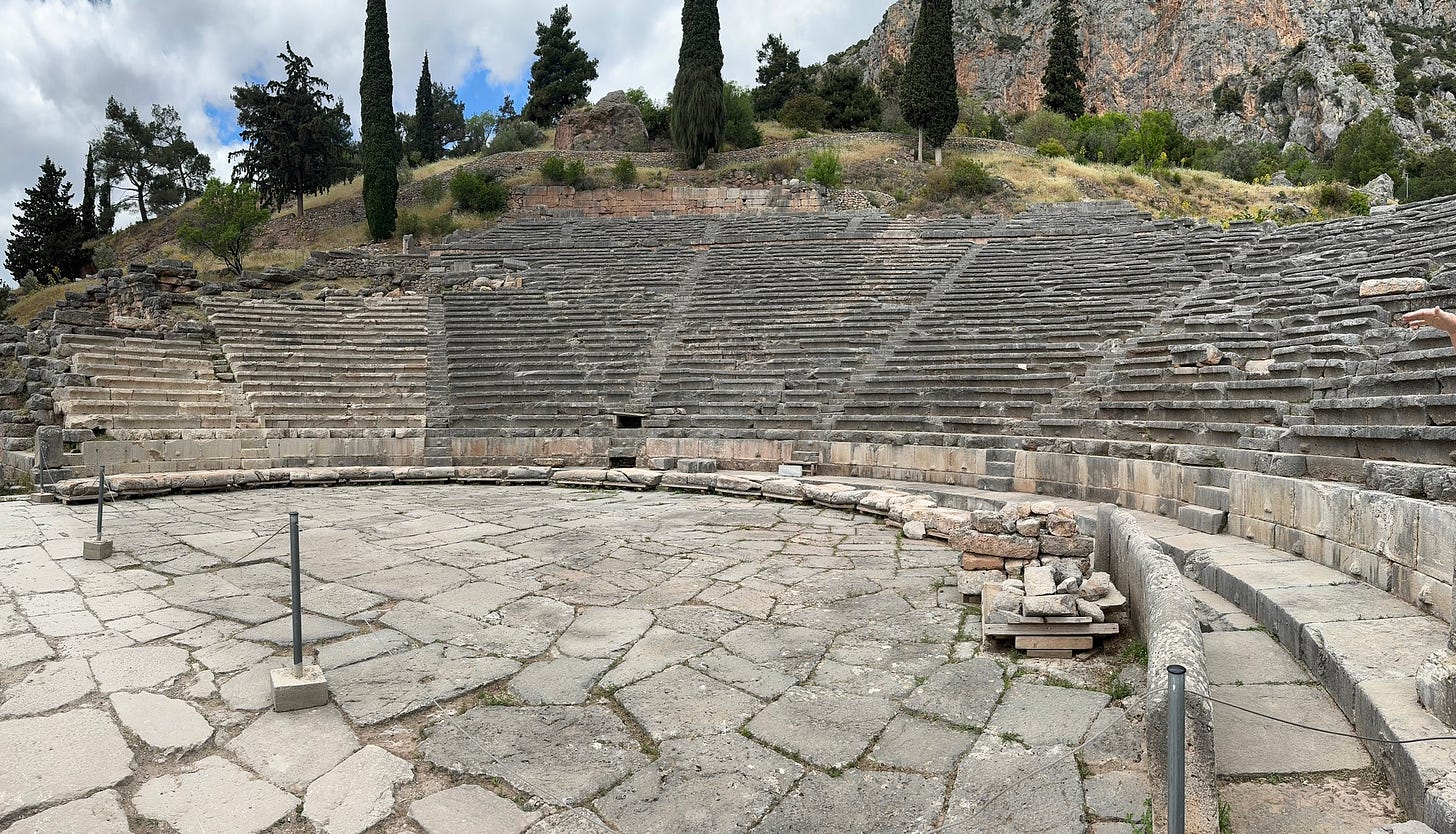


Wow! Gorgeous photos and fascinating history. I had only one day in Athens and used it to visit the Parthenon. Wish I had time for this side trip!